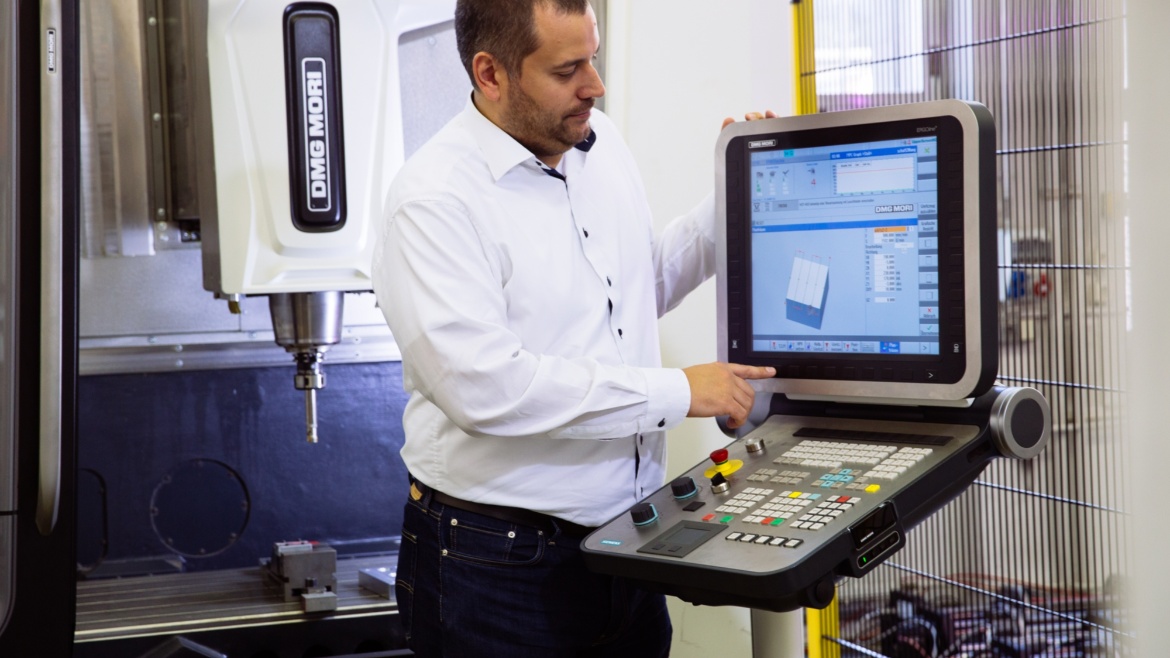
Individualized mass production is increasingly becoming a reality. However, design and production planning can become a bottleneck if engineers do not have enough work capacity. The Institute for Control Engineering of Machine Tools and Manufacturing Units (ISW) at the University of Stuttgart is investigating how artificial intelligence (AI) can relieve the strain on engineers.
Automobile production is highly automated. It would not otherwise be possible to manufacture a product as complex as a vehicle in the required quality and speed, let alone at an affordable price. It is a mass production process, but one that allows for a lot of variations: the range of chassis, seat covers, paintwork, infotainment equipment and assistance systems is so wide that the possible combinations for a vehicle model can be several hundred million. This is why automotive production today is already more a customer-specific process than a classic mass production process and this is made possible by automation. Now there is talk within the industry of batch sizes of 1, whereby vehicles are manufactured for each customer individually without incurring uneconomically high production costs. This highly automated manufacturing process is no longer just the vision of the automotive industry, but also everywhere where large quantities are produced on an industrial scale.

Independent production is state of the art Technology
“In the past, a manufacturer planned once and manufactured several times, but with batch sizes of 1 he has to plan once to manufacture once,” says Akos Csiszar, explaining the consequences of this trend. Csiszar is a scientist at the ISW of the University of Stuttgart, which is headed by Prof. Alexander Verl and Prof. Oliver Riedel. “Planning once, manufacturing several times” is common practice in production today: CNC machine tools, i.e. computer-controlled machines, are standard. “One operator can operate several of these CNC machines simultaneously,” says Csiszar. “He doesn't have to give his full attention to any one of them as long as it is running smoothly and completes its task.” The situation is different in the preceding stages of the production chain: whilst workpieces can be designed and planned with the aid of computers, the software used for this can only perform very rudimentary tasks without the constant intervention of the designer. “Each step must be defined manually,” clarifies Csiszar and adds with a wink: “with these software solutions, engineers work more than computers.” While a single operator can support three to five CNC machines in parallel, software-supported design and production planning require constant intervention.
This way of working is similar to driving a car today: the available software tools are the maps. They show all possibilities, but the immediate attention of the driver is permanently required to stay on the right track. In an autonomous vehicle, on the other hand, the driver's attention is only required in certain situations; for the rest of the time he can devote himself to other things. “In a figurative sense, one would also need a highly automated car that relieves one of standard tasks during construction,” says the ISW scientist. And as with the mobility of the future, AI is also considered to be the hope for automated construction.
AI agents take on subtasks
“We want to use existing AI algorithms, many of which are even freely available as open source software, for computer-aided production planning” says Csiszar. “The difficulty is to formulate typical production engineering problems in such a way that they can be processed with the AI algorithms.” The following example shows that this is less trivial than it sounds: The aim of milling is to produce a workpiece with the desired geometry and surface accuracy as quickly as possible - for example from a metal block. If the engineers plan this machining process on the computer, they have many variants to choose from, such as whether the milling head moves back and forth along parallel strips or always only in the same direction, where the milling head starts and at what feed rate it advances. All of this has an influence on the accuracy and the time required. “In our AI approach, engineers would no longer have to go through all the settings in the program,” explains Csiszar. “Instead, they would have a small utility, a so-called agent, as an aid. This in turn would commission other subordinate agents with special tasks, such as drilling holes or removing material as quickly as possible.” To ensure that the final result meets the requirements, the agent system learns using realistic simulations with the aid of AI, and acts independently in accordance with the objectives set. This leaves the engineers plenty of time to deal with other things until the results are available, without having to go through the optimization process themselves.
"We have already used simulation methods at the ISW to explore how AI agents could be trained,” said Csiszar. “A further step will be to catalogue existing methods and formalisms for problem description to assess which of these AI approaches are best suited to our questions.” This preliminary work is necessary for a research project that the ISW is currently preparing: together with international scientific institutions and medium-sized companies, the ISW team want to create the basis for the ability to automate tools for computer-aided production planning in the future. The project starts this year.
Michael Vogel
Dr.-Ing. Akos Cziszar
Institute for Control Engineering of Machine Tools and Manufacturing Units (ISW), University of Stuttgart


